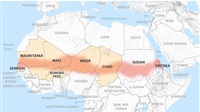Scientists report flaws in WHO-funded study on 2-metre distancing

Senior scientists have reported flaws in an influential
World Health Organization-commissioned study into the risks of coronavirus
infection and say it should not be used as evidence for relaxing the UK’s
2-metre physical distancing rule.
Critics of the distancing advice, which states that people
should keep at least 2 metres apart, believe it is too cautious. They seized on
the research commissioned by the WHO, which suggested a reduction from 2 metres
to 1 would raise infection risk only marginally, from 1.3% to 2.6%.
But scientists who delved into the work found mistakes they
believe undermine the findings to the point they cannot be relied upon when
scientists and ministers are forming judgments about what constitutes safe
physical distancing.
“The analysis of infection risk at 1 metre versus 2 metre
should be treated with great caution,” said Prof David Spiegelhalter, a
statistician at Cambridge University, who has participated in the government’s
Scientific Advisory Group for Emergencies . “I’m very suspicious of it.”
Prof Kevin McConway, an applied statistician at the Open
University, went further and called the analysis inappropriate. He said the
work “should not be used in arguments about how much greater the infection risk
is at 1-metre minimum distance as opposed to 2 metres”.
The study, published in the Lancet, is the latest to come
under fire from experts who fear that in the midst of the pandemic some
research papers are being written, reviewed and published too fast for
sufficient quality checks to be performed. Earlier this month, the Lancet and
another elite publication, the New England Journal of Medicine, were forced to
retract coronavirus studies after flaws in the papers emerged.
Doubts about the study emerged as Boris Johnson announced a
formal review of the 2-metre physical distancing rule, which is expected to
report by 4 July, the earliest date pubs and restaurants may reopen in England.
In recent weeks, Johnson has come under intense pressure from Conservative MPs
to relax the advice to help businesses, particularly in the hospitality sector.
Led by researchers at McMaster University in Ontario, the
report pooled data from previously published studies to estimate the risk of
becoming infected with coronavirus at different distances. It also considered
how face masks and eye protection might help prevent the spread of disease.
But in the analysis the authors assume the proportional
impact on risk of moving from 2 metres to 1 metre is the same as moving from 1
metre to zero. “They are forcing the proportional fit to be the same,”
Spiegelhalter told the Guardian.
McConway believes there is a more fundamental problem in the
way the risks of infection at different distances are compared in the study. He
said: “The method of comparing the different distances in the paper is
inappropriate for telling you exactly how the risk at 2-metre minimum distance
compares to a 1 metre minimum distance. It does not support, and should not be
used in, arguments about how much greater the risk is with a 1 metre limit
versus a 2-metre limit.”
Another scientist, Prof Ben Cowling at the WHO Collaborating
Centre for Infectious Disease Epidemiology and Control at the University of
Hong Kong, flagged further issues with the work. He tweeted that he was “not
taking the whole paper very seriously” because it looked only at distance and
not how long a person was exposed for.
McConway said he had raised questions about the analysis
with the authors and was waiting to hear back. He believed peer review by the
Lancet and the WHO should have spotted the problems. “I think they did it in
such a rush – the authors, possibly the WHO, and the Lancet peer reviewers –
that important things were missed,” he said.
“Everyone believes that the risk of infection at 1-metre is
higher than at 2-metre and we need to know how much higher because there’s a
trade-off between the increased risk and the gains from moving to 1-metre. But
if you don’t know how the risks at 1 metre and 2 metres compare, how do you
know how to trade it off? It’s finger in the air stuff,” McConway said.
The most recent public Sage document on physical distancing,
updated on 2 May, makes clear that multiple streams of evidence are used to
advise on safe distancing, including how long people are together, ventilation
and room size, and that the 2-metre advice is no more than a ballpark guide for
face-to-face meetings.
In a statement, the WHO said it recommends keeping a
distance of 1 metre or more.
“The evidence used to inform this guidance was based on a
systematic review of all available, relevant observational studies concerning
protective measures to prevent transmission of the coronaviruses that cause
Sars, Mers and Covid-19. After checking for relevance, 44 comparative studies
done in health-care and non-health-care settings were included.
“The findings of this systematic review and meta-analysis
support physical distancing of 1 metre or more, which is in line with the
existing WHO recommendation that people should physically distance at least 1
metre,” the statement said.
The Lancet and the authors of the study have been contacted
for comment.







